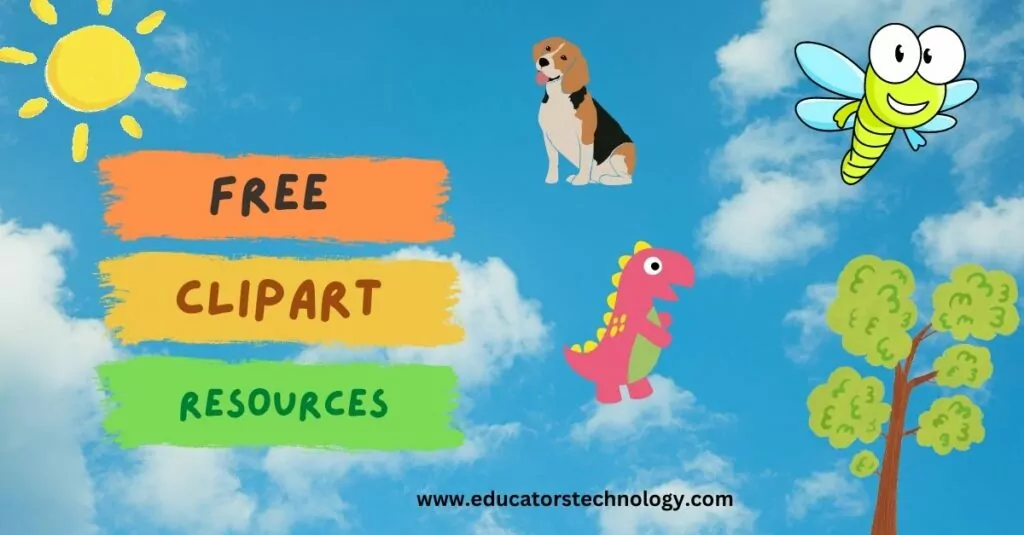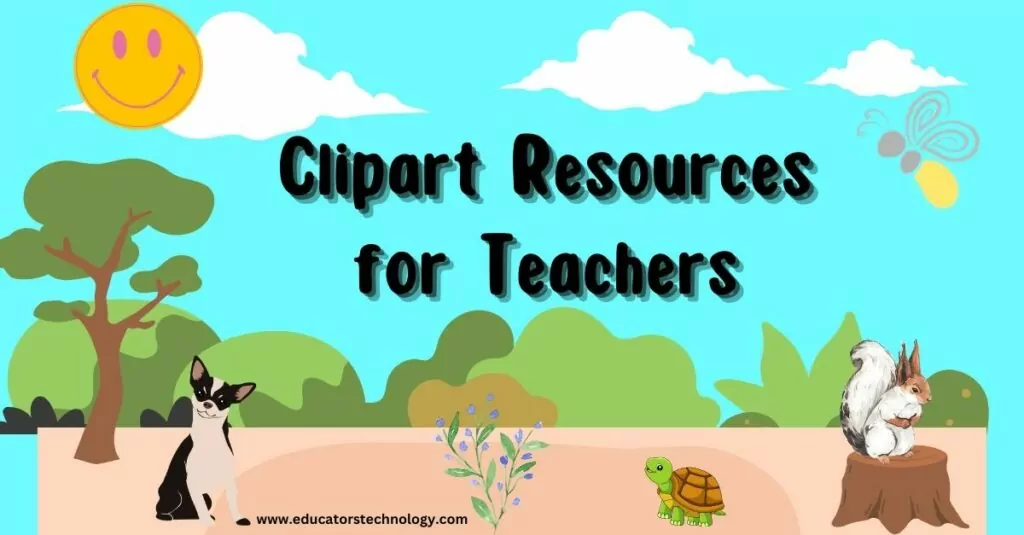In my years of teaching and blogging, I’ve discovered the immense power of visuals in enhancing learning and communication. The right clipart can bring lessons to life, helping to clarify complex concepts, and adding an element of fun and engagement.
With this in mind, I’m excited to share my top resources for free clipart for teachers – a list of invaluable sites that can add a vibrant touch to your classroom and blog materials.

Whether you’re designing worksheets, sprucing up your presentations, or adding a splash of creativity to your blog posts, these websites offer an array of free clipart for educational use. From vivid illustrations to more formal educational symbols, you’re bound to find clipart that suits your needs perfectly.
A Note on Image Use and Copyright for Students
Before we explore our curated selection of top-notch clipart resources, let’s take a moment to discuss a crucial topic: copyright as it pertains to image use. I want to highlight some key principles that students must comprehend to be able to navigate the digital landscape ethically and effectively. This understanding will enable them to harness these media resources optimally in their learning journey.
The first thing we should understand is what copyright actually is. In a nutshell, copyright is a law that gives the creator of an original work – be it an image, a song, or a novel – exclusive rights to its use and distribution.
Imagine spending hours on a piece of artwork, only for it to be used without your permission, or even worse, without any credit given to you. Not cool, right?
That’s why it’s so important to respect the rights of artists. There can be serious consequences for using someone else’s work without permission, including legal action. But don’t worry – there are plenty of resources out there where you can find free-to-use images, like the clip art sites I’ve shared in this post. I also shared another post where you can find images to use for educational purposes.
Another wonderful source is platforms that host Creative Commons images. Creative Commons is a licensing system that allows artists to specify how others can use their work. Some artists might allow their images to be used freely, while others might ask for credit. This brings me to my next point – understanding image licensing.
Licensing might sound complicated, but it’s actually quite straightforward. Some images are completely free to use without giving credit (though it’s always nice to do so), while others might require you to attribute the image to the creator.
There are also images that can be used for commercial purposes, while others can’t. That’s why it’s essential to always read the licensing agreement for each image.
Now, let’s talk about how to properly attribute an image. This usually includes the title of the image, the author, the source, and the license.
Finally, I want to talk about the concept of digital citizenship. Being a good digital citizen means respecting the rules of copyright and fair use. As educators, let’s inspire our students to use images legally and ethically, both in their school projects and in their personal lives.
Remember, the internet is an amazing tool, but it’s not a free-for-all. Respecting the hard work and creativity of others is a non-negotiable aspect of being a good digital citizen. After all, we would want the same courtesy extended to us and our work.
Best Free Clipart for Teachers
Here are my favorite sources of teaching clipart. Each of these resources is packed with vibrant, engaging, and free clipart for educational use.
1. Freepik
Freepik is definitely one of my favorite resources of teaching cliparts. It offers both free and premium resources, but their selection of free vector art is extensive and high quality. It is important to check the license of each image, as some require attribution.
2.The Noun Project
The Noun Project is another good resource that offers a vast collection of icons and clip art images from designers around the world. The platform provides both free and premium icons. Free icons require attribution to the creator. The site is easy to navigate and the icons are of high quality.
3. Clipart Library
As its name indicates, Clipart Library is just that, a huge library of cool clip art images and visuals all free to download and use in your media projects. It’s a great resource for teachers, as it covers a broad range of topics.
4. Flaticon
Flaticon is one of the early platforms I used to frequent during my early blogging days. i find it very similar the Noun Project and it too boasts a collection of over a million free vector icons. It also has a feature that allows you to edit the icon before downloading (change color, size, etc.). Free use requires attribution to the author.
5. Openclipart
Openclipart is another good option, with a wide variety of free clip art. One unique feature is that all of the clip art on this site is released into the public domain, so it can be used for any purpose without any copyright issues, but always double check before use.
6. Classroom Clipart
This website, as the name suggests, is designed specifically for classroom use. It offers free clip art, as well as animations and photographs, making it a comprehensive resource for teachers.

7. Clipart ETC
Run by the Florida Center for Instructional Technology, this site offers free clip art for students and teachers. The images are well-organized by subject area, which is great for educational use.
8. Canva
While known primarily as a design tool, Canva also offers a library of free clip art and graphics. Canva requires a user account, but the basic plan is free.
9. Pics4Learning
While not strictly a clip art website, Pics4Learning offers copyright-friendly images for teachers and students. It’s a great resource for more realistic imagery.
10. Public Domain Vectors
If you’re in need of vector images, this is a great place to look. These can be resized without loss of quality, making them perfect for printing or using in presentations.
11. Vecteezy
While some content is premium, there are many free vector images and clip art available. A good variety of educational clip art can be found here as well.
12. Pixabay
In addition to photos, Pixabay offers vectors and illustrations. All images and videos on Pixabay are released free of copyrights under Creative Commons. You may download, modify, distribute, and use them royalty-free for anything you like, even in commercial applications, but as I always say, make sure to double check permission statements.
13. Iconfinder
If you’re looking for icons or simplistic vector images, Iconfinder has a large collection. There is a mixture of free and premium content, so be sure to filter for free images.
14. Unsplash
Although Unsplash is primarily a platform for high-quality, free-to-use photographs, you can also find digital art and clip art-style images. Everything on Unsplash is licensed under the Unsplash license, which allows for both non-commercial and commercial use.
15. Pexels
Like Unsplash, Pexels is more known for free photos and videos, but you can also find a variety of digital art and clip art-like images. All materials are licensed under the Pexels license which allows for free use in commercial and non-commercial projects.
16. Free Vector
Free Vector offers a huge collection of clipart, all of which are vector-based. These images are great for teachers since they can be easily resized without losing any quality. Some images require attribution, so make sure to check the license details.
17. Vector Portal
Vector Portal provides a multitude of free vector designs which can be useful for teachers for creating visually attractive educational materials. The vectors can be used for free in non-commercial products, but check the license for commercial use.
Final thoughts
The resources listed here offer a treasure trove of images that can brighten any classroom or educational blog, making learning a more dynamic and enjoyable process for students. This journey through the world of free clipart also serves as a gentle reminder of the responsibilities we have in respecting artists’ rights. By making informed choices and teaching our students to do the same, we model the principles of digital citizenship. As we utilize these wonderful resources, let’s do so with gratitude and integrity, honoring the creators who have generously shared their work to enhance our educational endeavors.




